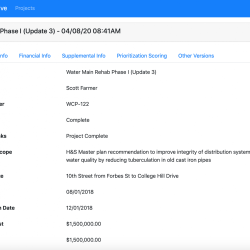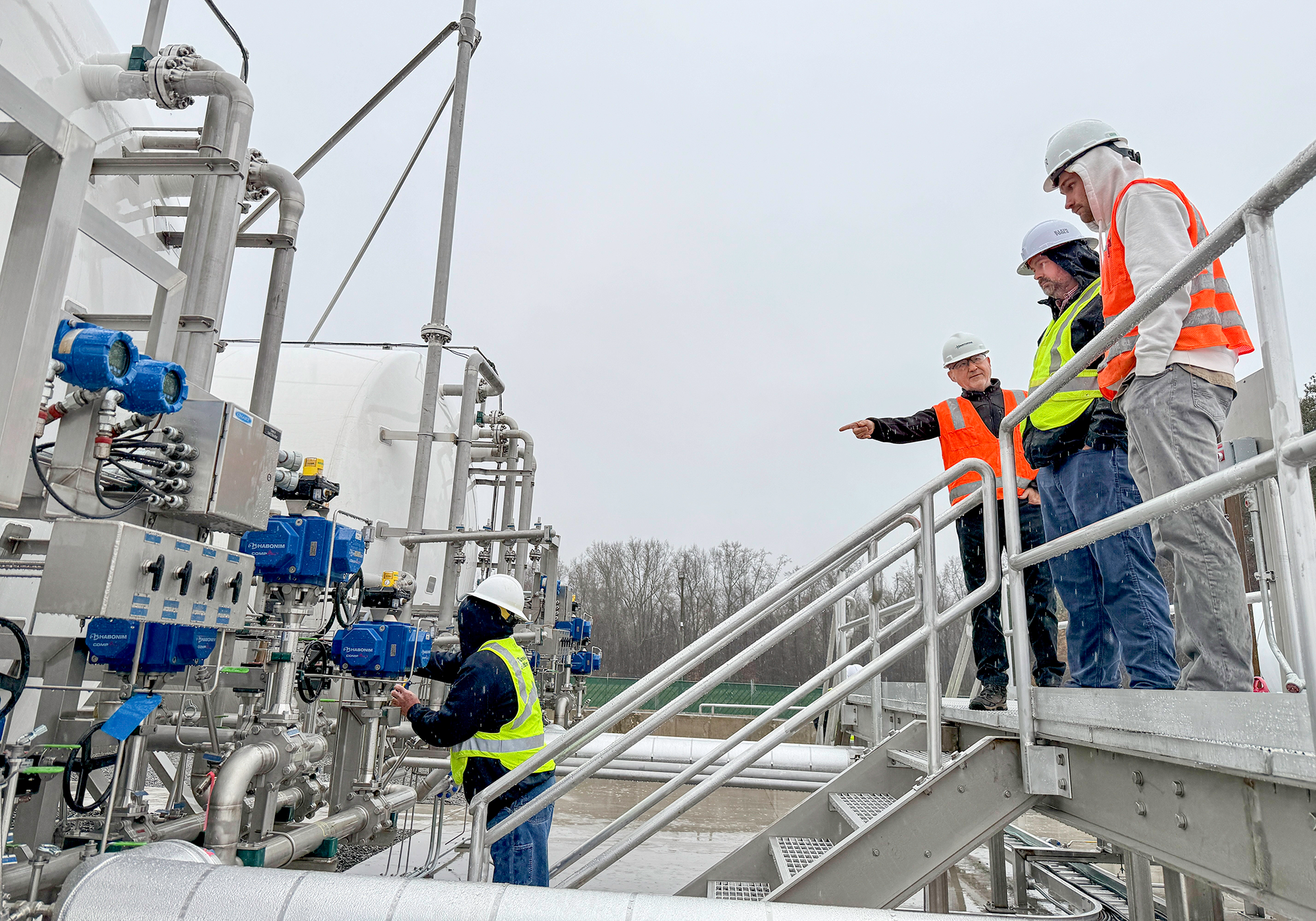
iLead is our internal leadership, education, and development program that was designed to help employees prepare for leadership positions within GUC. November 2019 marked the fourth year of project presentations by iLead teams. The focus of each group project must be aligned with one of four parts of GUC’s mission statement (customer service, safety, employees, and environment). Groups present their ideas to the Management Team each November for implementation consideration. We will spend the coming months focusing on iLead projects that are already making a difference at GUC.
Capital Projects Prioritization & Communications Process
The 2017 iLead class had 25 employees, with five participants in each group project. One of the first projects selected by the Management Team for implementation that year was Capital Projects Prioritization & Communications Process, presented by Jonathan Britt (Finance), George Darden (Electric), Kevin Jones (Electric), Brandie Whitehurst (Finance), and Carl Smith (Gas). The team came up with this idea based on their own experiences of capital project planning and collaboration as representatives from different departments.
What is a Capital Project?
A capital project is a large project that helps maintain or improve our infrastructure or business systems, such as major new construction or renovation projects. One example of GUC’s most recent capital projects is the New Operations Center, which involved multiple years of planning and implementation as well as a large budget. Projects of this scale are budgeted for years in advance to ensure that appropriate funding will be available.
“The type, availability, predictability, and timing of funding for capital projects can have a significant impact on project schedules,” said iLead project team member Jonathan Britt, Manager of Advanced Analytics. “Also, an interdependent relationship exists between the Capital Improvements Plan and the annual budget that elevates the importance for GUC to prioritize capital projects that align with the strategic plan and enhance efficiency across departments.”
iLead Project
With all this in mind, the iLead team designed a process that supports objective and strategic organization and scheduling of capital projects, allowing time and resources for planning, budgeting, prioritizing, and collaborating internally, sometimes across departments. The process also helps to ensure that capital projects tie in with GUC’s vision, mission, and strategic plan.
“Our iLead team had a diverse talent and skill set representative of GUC as a whole, as well as a common interest in the major capital initiatives of GUC,” said Jonathan, “so we were all on board with the idea of a process that communicates the ‘why’ of each project.”
After this iLead project was approved, the team put together a Process Development Committee that has now transformed into the Capital Projects Review Team, comprised of employees from IT, Water Resources, Gas, Electric, and Analytics. After several trials of different formats, the team developed a convenient tool called the Capital Project Narrative app. The app was created by our IT Application Team.
The app gives project managers a convenient way to input information about their capital projects, and successfully serves as a bridge between Operating Departments and Finance. It’s also become a point of transparent communication and planning for all departments. The app contains relevant information about planned and ongoing projects, giving departments the ability to communicate and collaborate more effectively, and giving management and Finance the ability to prioritize capital projects and funding based on objective information such as need, timing, and budget.
Twice a year, the Capital Projects Review Team reviews the capital projects within the app, and gathers any updates needed to help them score each project. “The score is not a yes/no for a project’s implementation but rather an information tool meant solely to help make informed decisions,” said Jonathan.
Through the app, project submittals are prioritized by critical impacts on GUC, infrastructure reliability, financial impact, legislative/regulatory mandates, and operational consequences. These are each evaluated by both the department and the Capital Projects Review Team using a project scoring matrix. Department Project Managers are then able to use the prioritized list to make informed project planning decisions.
“This tool has not only been successful in providing a consistent prioritization mechanism for capital projects across departments, but also in helping with succession planning,” said Jonathan. “When a new employee comes on board, especially someone responsible for project management, he or she can review capital project narrative forms to quickly get caught up on current and historical activities related to each ongoing and upcoming capital project.”
Benefits of the Capital Projects Prioritization & Communications Process include:
- Objective measurement of project alignment with corporate strategic objectives and initiatives
- Resource for project managers to use for project prioritization
- Better workforce engagement and collaboration







